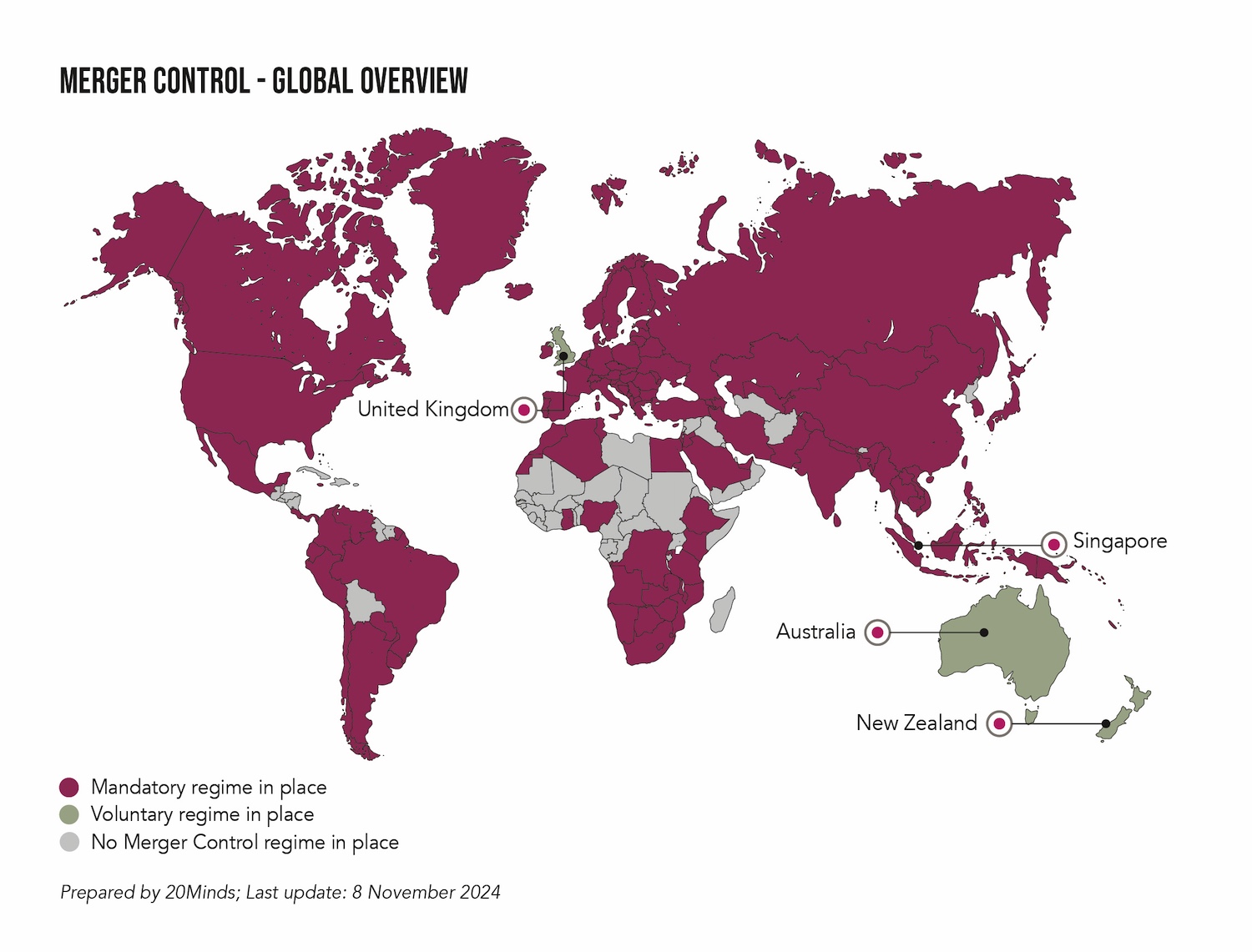topic
jurisdiction
downloadable assets
article
Sample

What is merger control?
Merger control is the regulatory process where competition authorities review transactions to ensure they do not harm competition in the market. The goal is to prevent the creation of monopolies or the abuse of dominant market positions.
Merger Control is similar to...
In terms of impact on transactions, merger control is similar to foreign investment reviews / investment screening (e.g., CFIUS filings), as well as industry-specific approval requirements (e.g., UK FCA controller notifications). These approvals typically also need to be obtained prior to closing, like merger control.
Scope
Merger control is not limited to mergers. It covers various transactions, including:
- Acquisitions: Purchasing control over another company by way of asset or share deals, including minority shareholdings that may impact competition.
- Joint Ventures: Creating a new entity with another company, including full-function joint ventures that operate independently in the market.

Distinguishing merger control...
Merger control differs from other regulatory approvals, like foreign investment reviews, which focuses on national security and/or public interest. Merger control specifically assesses the impact on market competition.
Key regulators
- CCC: Australia Competition and Consumer Commission
- BKartA: German Federal Cartel Office
- CADE: Conselho Administrativo de Defesa Econômica (Brazil)
- CCB: Canada Competition Bureau
- CCI: Competition Commission of India (India)
- CMA: Competition and Markets Authority (UK)
- EC: European Commission (EU)
- FTC, DOJ: Federal Trade Commission, Department of Justice (US)
- JFTC: Japan Fair Trade Commission
- SAMR: State Administration for Market Regulation (China).
Many other national regulators also have jurisdiction depending on where the parties have a business presence, e.g., domestic sales or assets.

Key concepts
- Mandatory Filings: In many jurisdictions, filings are mandatory, if certain revenue, market share or transaction value thresholds are met.
- Suspensive Effect: Merging parties are often prohibited from completing the transaction until they receive regulatory clearance. This means merger control is a condition precedent (CP) / closing condition to the SPA (Sale and Purchase Agreement).
Possible outcomes of a merger review
Approval (unconditional clearance): The merger proceeds without restrictions.
Conditional approval: The deal can proceed if certain commitments/remedies (e.g., asset sales) are made.
Prohibition: The merger is blocked if it would significantly harm competition.
Preparation time
Preparing a filing typically takes 2 to 6 weeks or more, depending on the number and complexity of filings and the availability of internal data. In general, there is a trend toward requiring more information in merger filings, so timelines to notify are getting longer.

Typical Information required for Submission
- Transaction structure and value
- Revenues and market shares of the parties
- Detailed Market information, such as: Products/services that are substitutable, How products/services are being sold, arriers to entry, Importance of imports/exports, Importance of R&D
- Competitors and customers and suppliers
- Internal documents
Time to get clearance
- Simple cases: Around 1 to 3 months from submission.
- Complex cases: Can take 6 months or longer, especially if regulators initiate in-depth investigations (e.g., “Second Request” in the U.S., “Phase 2” in the EU.


.png)



